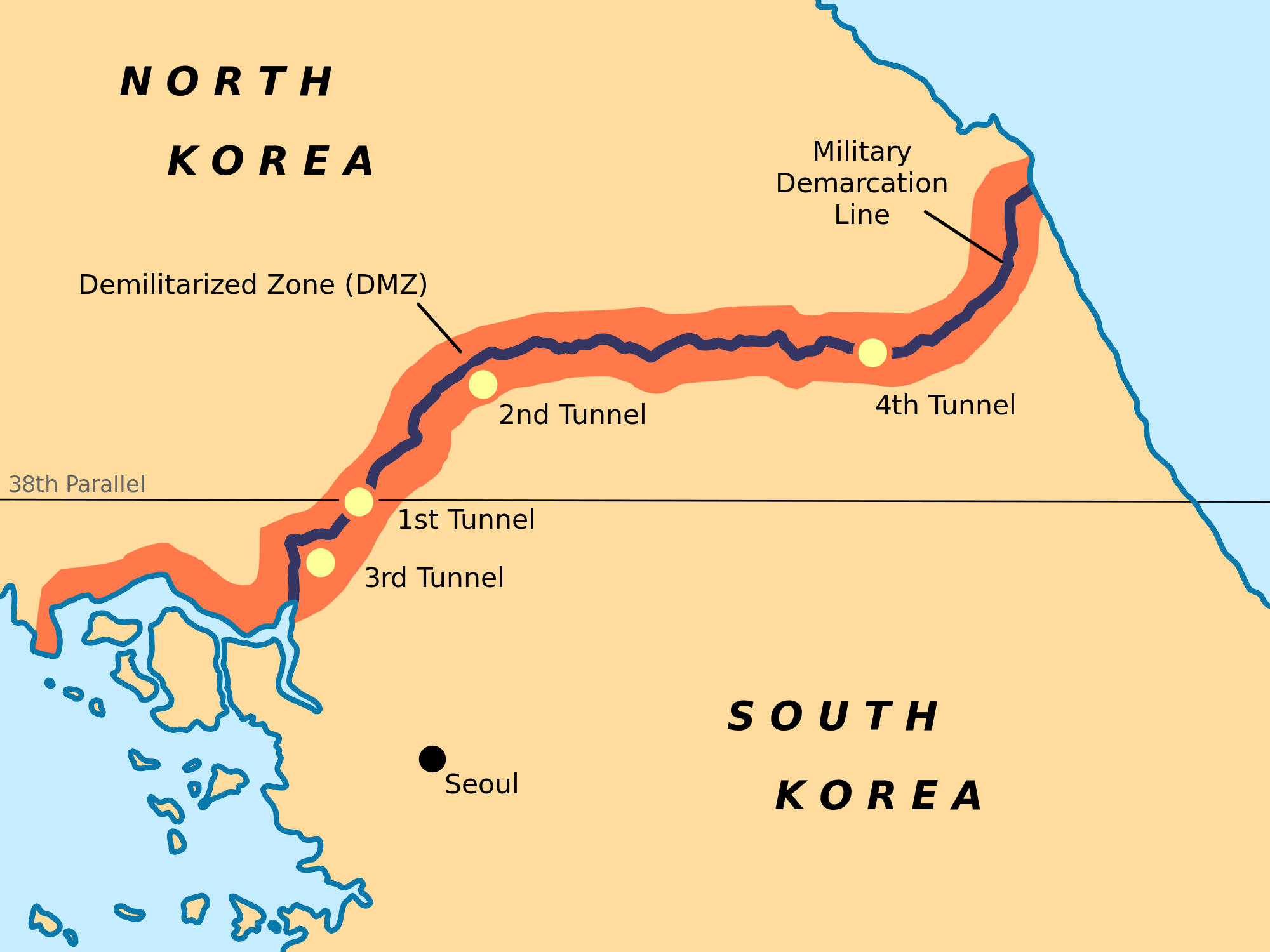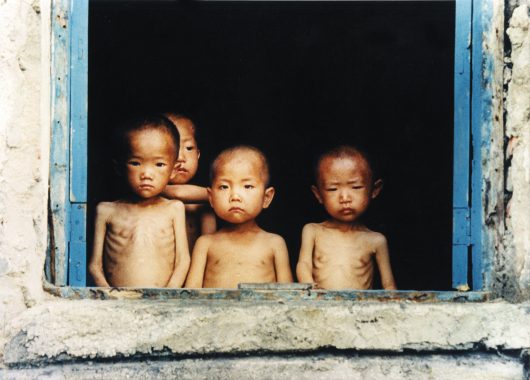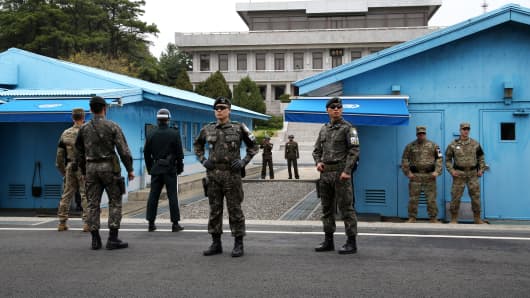

Both the DMZ and the Berlin Wall used heavily guarded, physical structures to divide areas that were once unified. Both were created during the Cold War period following WWII. The wall divided communist countries from capitalist countries both aligned to larger more powerful allies -- North Korea to China and Russia and East Germany to the Soviet Union. The borders of both were mainly intended to prevent people from communist side from crossing into the wealthier, democratic side. These borders separated entired families, friends and communities. Both North Korea and East Berlin were a lot poorer than their neighbors. Their people would cross over to their wealthier neighbor if they could, so their leaders sealed the borders making both North Korea and East Berlin less successful. East Berlin and East Germany had very poor quality cars, technology and infrastructure compared to West Berlin. North Korea is even more isolated than East Berlin and probably even poorer than South Korea in comparison. Once the Berlin Wall came down, the situation in East Germany got a lot better. This teaches us what can and will happen to countries that make similar border enhancements, and the social and political effects of staying isolated versus reunification.


The Berlin Wall was created to prevent East Berliner’s from crossing into West Berlin during the Cold War from 1961 to 1989. The Berlin Wall was highly guarded and almost impossible to cross. If you were caught trying to flee to the opposite side of the border, you would be shot. The East-West Berlin wall was created during a Cold War, a war with no physical or direct fighting between two opposing countries. A couple of speeches were made about the presence of the border, during one of the most famous speeches President John F. Kennedy spoke “I take pride in the words Ich bin ein Berliner.” (John F. Kennedy), after his speech in Berlin. The Wall stood until 1989, when East and West Berlin tore down the physical wall.
The DMZ was created near the end of the Korean War. (1950-1953) The Demilitarized Zone is located on the peninsula of Korea and is the division between North and South KOREA. It is about four kilometers long and runs along the 38th parallel. The DMZ is one of the world's most heavily militarized borders and is almost impossible to cross. On either side, there are nearly two million North and South Korean Troops. Almost no one is allowed to cross and very few have made it over the border. Tensions are extremely high between North Korea and the rest of the world. After World War II, the Soviet Union and the United States divided Korea into North Korea and South Korea. Ever since then, North Korea has been an extremely secretive and isolated country.


North Korea has divided itself off from South Korea and most of the world for almost sixty-five years. Separated by the Korean Demilitarized Zone, it is extremely difficult to cross from country to country. Tensions are high between North Korea and several other countries, including the U.S. Today, North Korea continues to build up its nuclear arsenal and continues to execute more missile tests. They do not target a single country, but their growing collection of weapons can intimidate other countries, and even start an arms race. During the Cold War, the Soviet Union and the U.S. also were in an arms race. Arms races are costly, can be dangerous and may even lead up to a full out war. In the Cold War, U.S. and the Soviet Union both expanded their military, even though there was not a direct war between the two. They spent huge amount of financial resources on weapons. Recently, North Korea’s missile tests (some successful and some not) have been intimidating other countries such as Japan. Japan has been forced to beef up their army after several North Korean missile tests were fired over Japan. After WWII, Japan rejected its right to wage war and only has a defensive military. In response to North Korea, Japan created a new marines force. The tensions that North Korea causes create major political and social problems for not just themselves, but the rest of the world.
During the Cold War, the Soviet-led communist and the US-led democratic countries spoke verbal threats between these two groups. One of the events that occurred during the war was the building of the Berlin Wall. The Berlin Wall was created in response to the many thousands of East Germans that used East Berlin was a getaway by Communist East German authorities, with construction starting on August 13, 1961. The wall prevented East Germans from leaving East Berlin due to high amounts of security and separated many families. “The Berlin wall divided families who found themselves unable to visit each other. Many East Berliners were cut off from their jobs. West Berliners demonstrated against the wall and their mayor Willy Brandt led the criticism against the United States who they felt had failed to respond.” With the final construction of the wall, sprouted issues. On October 27-28, 1961, there was a 16 hour standoff between the United States and Soviets tanks at Checkpoint Charlie. This standoff occurred because a diplomat from the United States was denied access from entering East Berlin, despite the rule that Americans were allowed to enter East Berlin freely through this checkpoint. The Americans objected to this and tanks were called in. This standoff created risk towards Berlin citizens. “Who’s going to accidentally fire a round that was my greatest fear was someone is going to accidentally fire and I’m afraid that would have been the start of the third world war.” (Harold Smith). Having American and Soviet tanks facing off against each other in big city is highly dangerous because through the eyes of a witness of the situation people can understand that by having U.S. tanks there was the risk of something going terribly wrong. If something were to go wrong then the action of this can escalate into starting another world war and would have citizen lives at risk. When the tanks left, President Kennedy said, "It's not a very nice solution, but a wall is a hell of a lot better than a war." Overall, the impact of the Berlin Wall was negative due to the number of risks that followed.


Near the end of the Korean War, a Demilitarized Zone was created at the peninsula of Korea that split the North and South. This zone is guarded by both countries with daily patrols and heavily fortified borders. Although this demilitarized zone has kept war from breaking out since the Korean War, there is no denying that the tensions between these two countries and their allies are higher than ever with the amount of nuclear testing that North Korea has done. While South Korea has suffered some from the border, the people of North Korea have been severely impacted. “The peace treaty was never signed, the war between the North and South of Korea still rages over 60 years on, at least technically, anyway, and the Demilitarized Zone (DMZ), the border between two countries now worlds apart, serves as the best reminder.” (Elliott. “DMZ from North Korea - The World's Most Dangerous Border.” Earth Nutshell) The construction of the Korean zone was started on July 27, 1953 as a result of the agreements between North Korea, China and the United Nations. With the zone in place, the impact of citizens still grows at large, with major impacts on North Koreans not being allowed to cross over unless given special permission overpopulation increases and with that springs other problems. Behind the zone and with agreements, North Korea is able to be an undisturbed, isolated communist country. Its government is able to control everything within a country without any say from the citizens, North Korea censored many resources that are widely used around the world and the rampant use of propaganda. With strict censorship laws on communication, there is censorship over journalism, television, radio, and the internet. Censorship is not the only problem within North Korea, starvation is a major problem and the penalty is severe for fleeing citizens. “We had already decided to kill ourselves rather than be sent back to North Korea.” (Fisherman) With economic mismanagement and little to no allies, the country's supplies for food are declining, leaving many citizens malnourished. The penalty for trying to flee the borders of North Korea can result in physical abuse, family endangerment, labor camps, and possible death sentence. Overall, the impact of the Korean DMZ is negative towards North Korea citizens due to their escalating famine and death rates.

